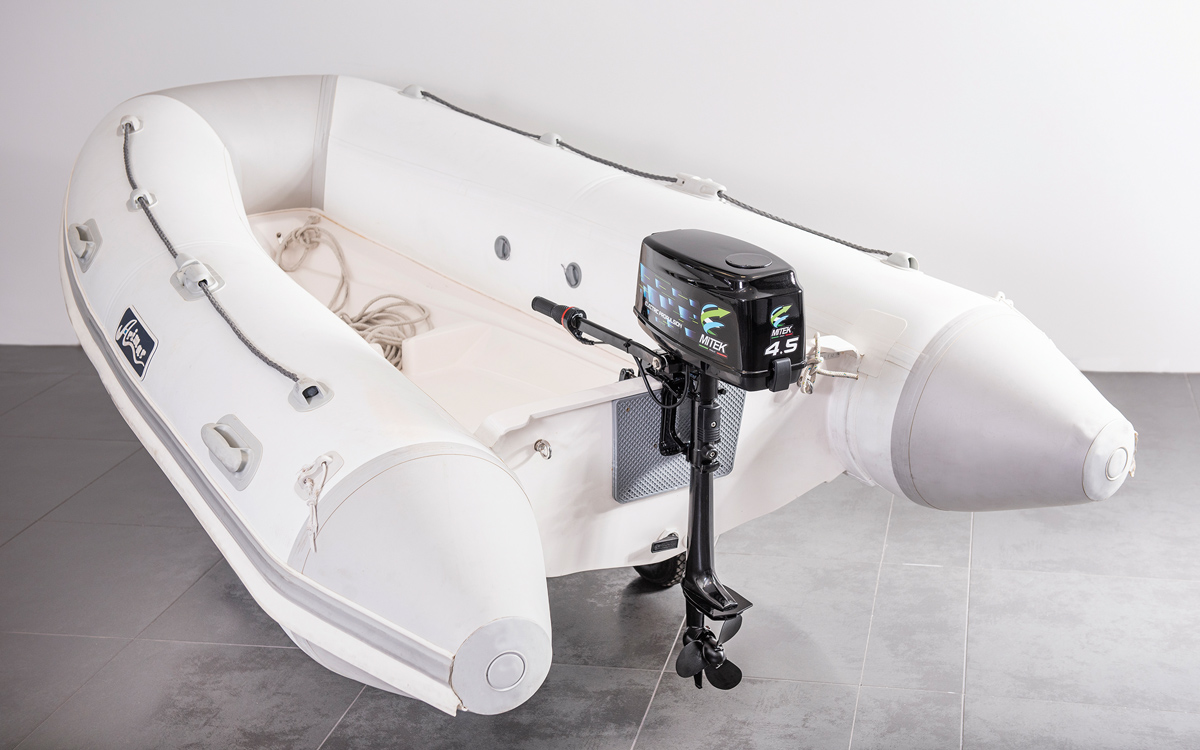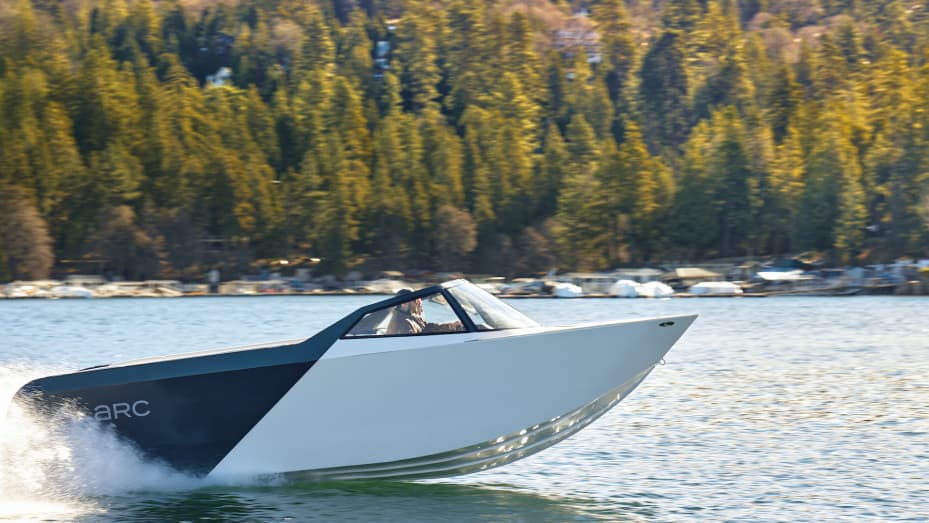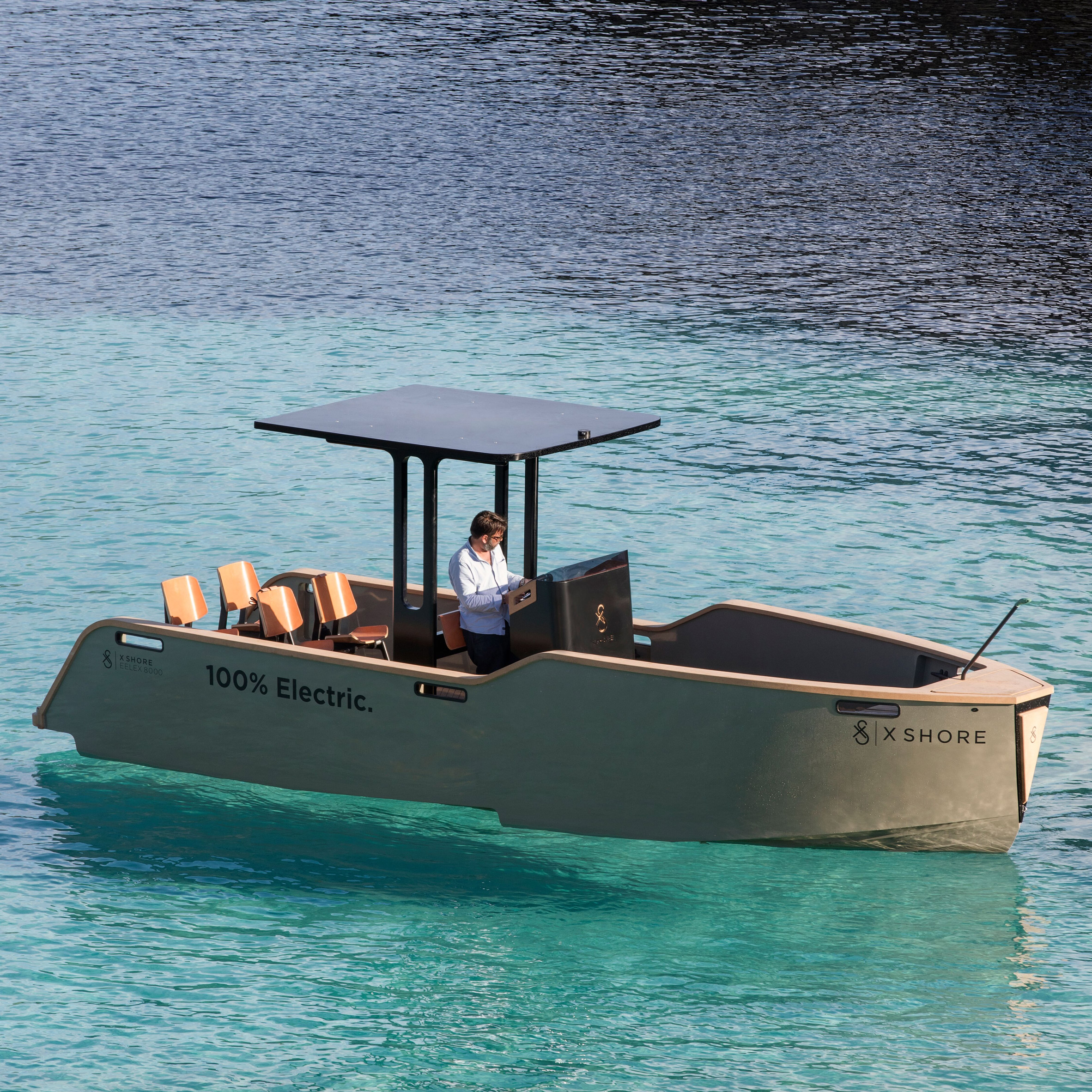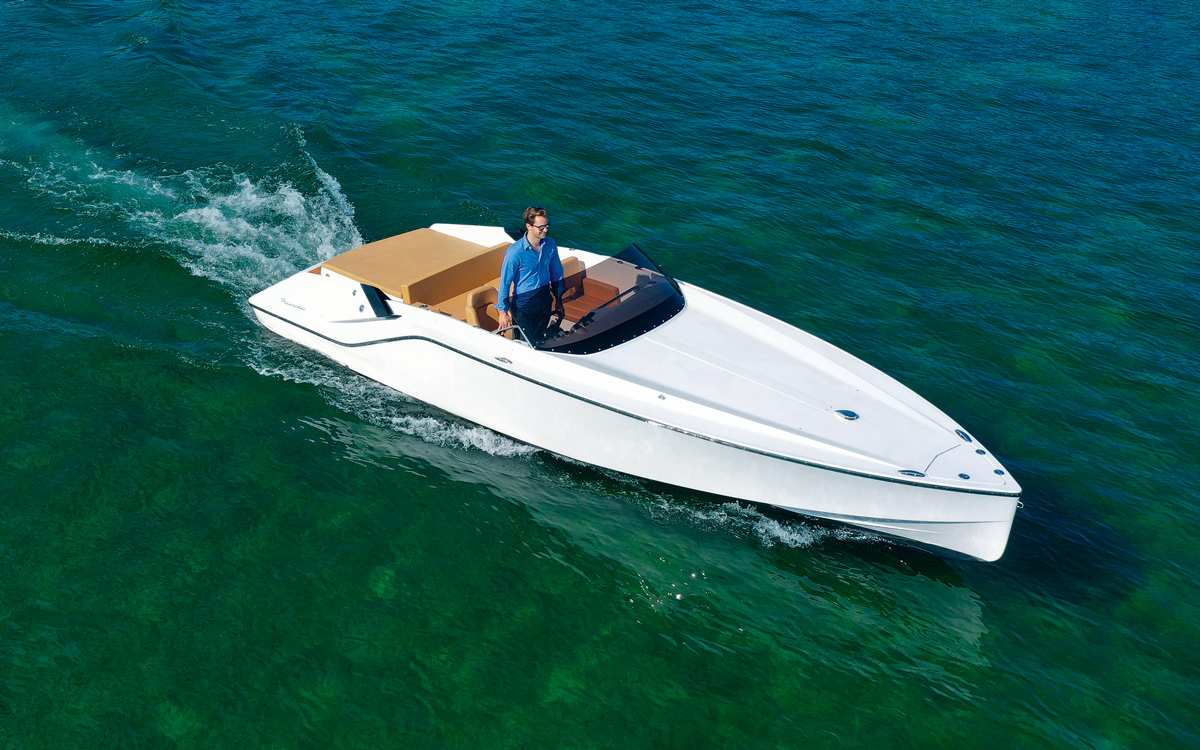Complete Guide on the Latest Electric Boats: Your Concise Overview
As the world shifts towards sustainable and eco-friendly technologies, the boating industry is no exception. Electric boats are becoming increasingly popular, offering an environmentally responsible alternative to traditional combustion engines. By harnessing electric power, these modern vessels provide a cleaner, quieter, and more efficient means of transportation on the water.
Staying up-to-date with the latest advances in electric boating is essential for anyone interested in making the switch to a more energy-conscious way of exploring the open seas. From sporting yachts to leisure cruisers, numerous manufacturers are designing and launching new models to cater to this growing demand. These electric boats combine groundbreaking technology with comfort, luxury, and impressive functionality, making them an appealing choice for the environmentally-minded boating enthusiast.

Fundamentals of Electric Boats
The world of electric boats is evolving rapidly, paving the way for a new era of environmentally-friendly and high-tech watercrafts. In this section, we will explore the fundamentals of electric boats, focusing on the types of electric motors, battery technologies, and charging infrastructures that power these advanced vessels.
Types of Electric Motors
There are two main types of electric motors commonly used in electric boats: direct current (DC) and alternating current (AC).
- DC Motors: DC motors are relatively simple and have been used in electric boats for many years. They generally have lower initial costs, making them an attractive choice for budget-conscious boaters. However, they may require more maintenance due to the brushes and commutator within the motor.
- AC Motors: AC motors are more robust, efficient, and low maintenance compared to DC motors. While they might be more expensive initially, AC motors often provide better long-term value due to their higher overall efficiency and durability.
Choosing the right type of electric motor for a boat depends on factors like budget, performance requirements, and maintenance preferences.
Battery Technologies
The choice of battery technology is a crucial aspect of electric boats, impacting range, weight, and charging times. The two main types of battery technologies for electric boats are:
- Lead-Acid Batteries: Traditional lead-acid batteries are a proven technology, offering an accessible and affordable option for electric boat owners. However, they are heavy and have a shorter lifespan compared to more advanced alternatives.
- Lithium-Ion Batteries: Lithium-ion batteries are a more advanced option, enabling higher energy density and longer lifespans than lead-acid batteries. Though more expensive initially, they provide greater overall efficiency and performance benefits, making them a popular choice for modern electric boats.
When selecting a battery system, boaters should consider factors like total range, available space, the boat's weight limitations, and their budget.
Charging Infrastructure
The availability and accessibility of charging infrastructure are essential for the widespread adoption of electric boats. Charging options for electric boats include:
- Shore-Based Charging: Electric boat owners can charge their boats at docks and marinas equipped with EV charging stations using AC or DC power sources. AC charging typically takes longer and is more widely available, while DC charging provides faster charging times at compatible locations.
- Onboard Charging: Some electric boats offer onboard charging capabilities, allowing users to recharge batteries using onboard generators or solar panels when away from shore-based charging stations.
As the electric boat market grows, it is expected that the availability and accessibility of charging infrastructure will significantly improve, allowing boaters to enjoy a hassle-free electric boating experience.

Market Overview and Trends
Electric boats have become increasingly popular, with more boating enthusiasts adopting cleaner and quieter marine vessels. As climate change awareness grows and governments implement stricter regulations on emissions, the demand for electric boats continues to rise.
Leading Brands and Models
Many boat companies and manufacturers are already producing fully electric and hybrid gas/electric boats, as well as electric outboard motors. Some popular brands dominating the electric boat market include:
- Power Boating Magazine highlights several new electric boat models for 2022.
- Boat Trader offers a comprehensive guide on electric and hybrid propulsion boats, featuring brands like Finnish OceanVolt and American Electric Yacht.
- California-based Electroprop sells pre-packaged 6 and 21 kW systems that boat builders can drop into their existing engine rooms, according to Boat Trader.
- Swedish diesel engine giant, Volvo Penta, announced plans in 2019 to introduce electric motors installed inline between their diesels and IPS, as mentioned by Boat Trader.
Market Growth and Demand
The global electric boats market is experiencing significant growth, with projections estimating continued expansion in the coming decade. The electric boats market value is projected to increase from US$ 5.65 billion in 2022 to US$ 19 billion by 2032, with a compound annual growth rate (CAGR) of 12.9% during the projected period, as stated by Future Market Insights.
The market's strong performance is driven by increasing global awareness of environmental issues, government regulations, and a growing demand for sustainable recreational boating alternatives. A report from Allied Market Research supports these growth projections, valued at US$ 5.0 billion in 2021 and reaching US$ 16.6 billion by 2031.

Environmental Benefits
Emission Reduction
One of the key advantages of electric boats is their reduced environmental impact, particularly in terms of emissions. Electric boat propulsion does not release harmful substances like carbon monoxide, hydrocarbons, particulate matter, and nitrogen oxides into the atmosphere, resulting in a cleaner and greener boating experience (RS Electric Boats). By transitioning to electric propulsion, local carbon emissions can be lowered by up to 99% (Epoch Boats).
Noise
Electric boats provide a much quieter experience compared to traditional gas-powered boats. The electric propulsion systems are significantly less noisy, making them more enjoyable for those on board and reducing noise pollution in the surrounding environment. This reduction in noise can also benefit wildlife in the area, as excessive noise levels can disturb their natural habitats and behavior (Epoch Boats).
Water Pollution
Another significant advantage of electric boats is their ability to minimize water pollution. Gas-powered boats can contribute to water pollution through oil spills, which can harm marine life and the overall water quality (Power Boating Magazine).
By choosing electric boats, boaters can play a role in preserving water quality and supporting marine ecosystems. The lack of gasoline engines eliminates the risk of oil spills and contributes to an overall cleaner and more eco-friendly boating experience (Power Boating Magazine).

Cost Comparison
Purchase and Maintenance Costs
When exploring the financial implications of investing in an electric boat, purchase and maintenance costs are important factors to consider. Electric boats have become more accessible in recent years, with price points that cater to various budgets. For instance, the Veer X13's cost is significantly lower than other electric boats like the Candela C-8, Navier N30, Arc One, and the R30 from Blue Innovations Group(source).
As for maintenance costs, electric boats generally require less upkeep compared to traditional gas-powered boats. Since electric boats have fewer moving parts and no internal combustion engine, there is less wear and tear. This results in reduced maintenance expenditures and fewer replacements of parts.
Operating Costs
Another significant financial aspect to consider is the operating costs of an electric boat. Fuel is a major expense for traditional gas-powered boats, which is largely eliminated when opting for an electric boat. Electricity costs are typically lower than fuel costs, which means long-term operating costs are substantially reduced.
Additionally, electric boats benefit from being environmentally friendly, as they use clean energy and produce zero emissions. This may lead to potential savings in mooring fees, as some marinas offer discounted rates for eco-friendly boats(source).
In summary, electric boats present an attractive alternative for prospective buyers when considering the reduced maintenance and operating costs. Although initial purchase prices may be higher for certain electric boat models, the long-term savings and benefits make them an appealing option in the boating market.

Performance Capabilities
Range and Speed
Electric boats have seen great advancements in recent years, improving their range and speed capabilities. For instance, the Eelex 8000 can reach speeds of up to 35 knots, which outperforms most electric boats that typically cruise between 12 and 15 knots (YachtWorld).
Another example includes the X Shore 1, which is the first all-electric 30-knot sportsboat priced under €100,000, demonstrating the increasing affordability of electric boats with impressive speed (Motor Boat & Yachting).
As for range, some electric boats like Voltari's 740 hp electric performance boat are capable of traveling long distances, such as from Florida to the Bahamas, on a single charge (Electrek).
Handling and Comfort
Electric boats offer smoother and quieter rides compared to their combustion engine counterparts. This benefits not only the passengers but also the surrounding environment, as it reduces noise pollution and creates a more serene experience on the water.
The responsive handling of electric boats makes them easier to maneuver in tight spaces and at low speeds. This enhanced control allows for better docking and overall safety, especially for inexperienced boaters. Additionally, many electric boats feature innovative technologies and design elements that further improve onboard comfort and convenience.
For example, Nautique's GS22E is a cutting-edge electric boat with a user-friendly interface, providing up to 2-3 hours of use on a single charge (Power Boating Magazine). The Nautique GS22E also has a passenger capacity of 11 and boasts features that cater to comfort and enjoyment, such as innovative seating and premium audio systems.

Future Developments and Innovation
As the electric boating industry continues to evolve, advancements in battery technology, new use cases, and applications are driving the growth of the market.
Advancements in Battery Technology
One of the primary factors influencing the future of electric boats is advancements in battery technology. As batteries become more energy-dense and efficient, electric boats can travel greater distances and achieve higher speeds without the need for frequent recharging. Improvements in battery management systems are also critical, allowing for longer battery life and better overall performance.
For example, lithium-ion batteries have become increasingly popular in electric boats due to their high energy density and relatively lightweight design. In addition, innovations in solid-state batteries may further revolutionize the industry, providing even greater energy density and charging capabilities (Boat Trader).
New Use Cases and Applications
Beyond the traditional recreational boating market, the electric boat industry is expanding into a variety of new use cases and applications. As electric propulsion systems become more efficient and cost-effective, commercial vessels can leverage these technologies to reduce fuel consumption and emissions. This includes cargo ships, ferries, fishing boats and even military vessels.
Electric boats are also finding applications in eco-tourism and water-based public transportation, providing quieter and less disruptive alternatives to traditional boats in environmentally-sensitive areas (Waterway Guide). Additionally, electric boats can be ideal for marinas and harbors, where noise and pollution restrictions may be in place.
As the electric boat market continues to mature, future developments and innovations in battery technology and new applications will play a crucial role in shaping the industry's growth and adoption. With greater emphasis on sustainability and a commitment to reducing emissions, the electric boat market is poised for significant expansion in the coming years.

Conclusion
The electric boat market is continuously evolving, with advancements in battery technology and renewable energy sources propelling the industry forward. With a variety of options now available for consumers, from compact leisure boats to high-performance vessels, electric boats are becoming more accessible and practical for everyday use (Boat Trader).
Adopting electric propulsion not only contributes to a cleaner environment by reducing pollution and greenhouse gas emissions, but it also helps preserve aquatic ecosystems and marine life (Power Boating Magazine). Electric boats still face challenges such as range limitations and access to charging infrastructure; however, ongoing research and innovation are progressively addressing these issues.
With the growing demand for environmentally friendly and sustainable boating options, electric boats are expected to become more prevalent in the market. As further advances in technology are made, it is likely that we will witness even more versatile and efficient electric boats in the not-too-distant future (Robb Report).
Charlie is Editor-in-Chief of Sea Magazine







